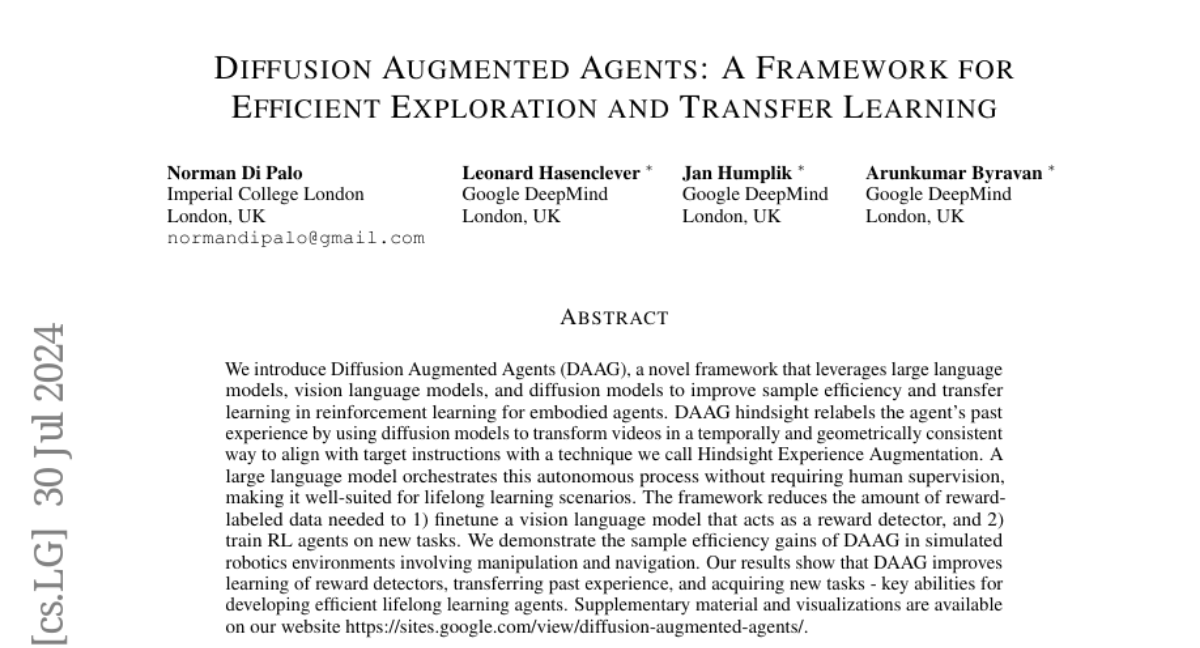Diffusion Augmented Agents: A Framework for Efficient Exploration and Transfer Learning
Norman Di Palo, Leonard Hasenclever, Jan Humplik, Arunkumar Byravan
2024-07-31

Summary
This paper introduces Diffusion Augmented Agents (DAAG), a new framework that improves how robots and AI agents learn and adapt to new tasks by using advanced models from language and vision, along with a technique called Hindsight Experience Augmentation.
What's the problem?
Training AI agents to perform tasks efficiently can be challenging, especially when they need to learn from past experiences. Traditional methods often require a lot of labeled data and can struggle to apply what they've learned to new situations. This makes it hard for agents to adapt quickly and effectively to different tasks.
What's the solution?
To solve this problem, the authors developed DAAG, which combines large language models, vision language models, and diffusion models. This framework allows agents to relabel their past experiences using a method called Hindsight Experience Augmentation (HEA). By transforming past experiences into useful data for new tasks, DAAG helps agents learn more efficiently without needing as much labeled data. It also enables the agents to explore their environments more effectively and apply what they've learned to new challenges.
Why it matters?
This research is significant because it enhances the capabilities of AI agents in real-world applications, such as robotics and automation. By making it easier for these agents to learn from their experiences and adapt to new tasks, DAAG can lead to smarter and more efficient systems that can operate in dynamic environments. This could have a wide range of applications, from manufacturing to service industries.
Abstract
We introduce Diffusion Augmented Agents (DAAG), a novel framework that leverages large language models, vision language models, and diffusion models to improve sample efficiency and transfer learning in reinforcement learning for embodied agents. DAAG hindsight relabels the agent's past experience by using diffusion models to transform videos in a temporally and geometrically consistent way to align with target instructions with a technique we call Hindsight Experience Augmentation. A large language model orchestrates this autonomous process without requiring human supervision, making it well-suited for lifelong learning scenarios. The framework reduces the amount of reward-labeled data needed to 1) finetune a vision language model that acts as a reward detector, and 2) train RL agents on new tasks. We demonstrate the sample efficiency gains of DAAG in simulated robotics environments involving manipulation and navigation. Our results show that DAAG improves learning of reward detectors, transferring past experience, and acquiring new tasks - key abilities for developing efficient lifelong learning agents. Supplementary material and visualizations are available on our website https://sites.google.com/view/diffusion-augmented-agents/